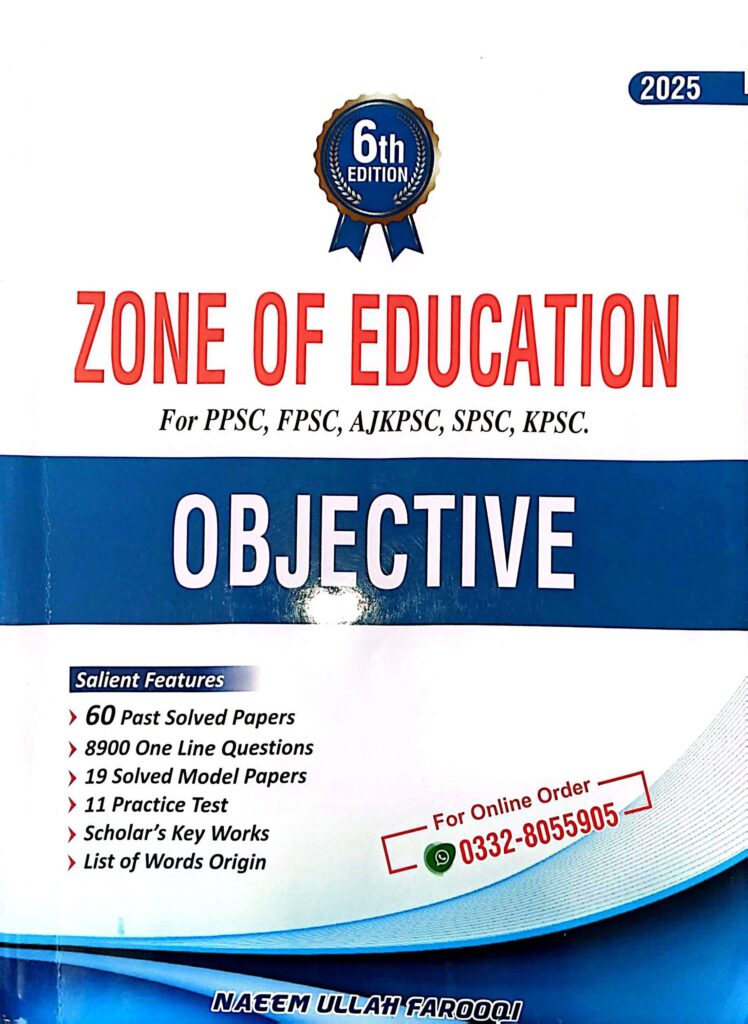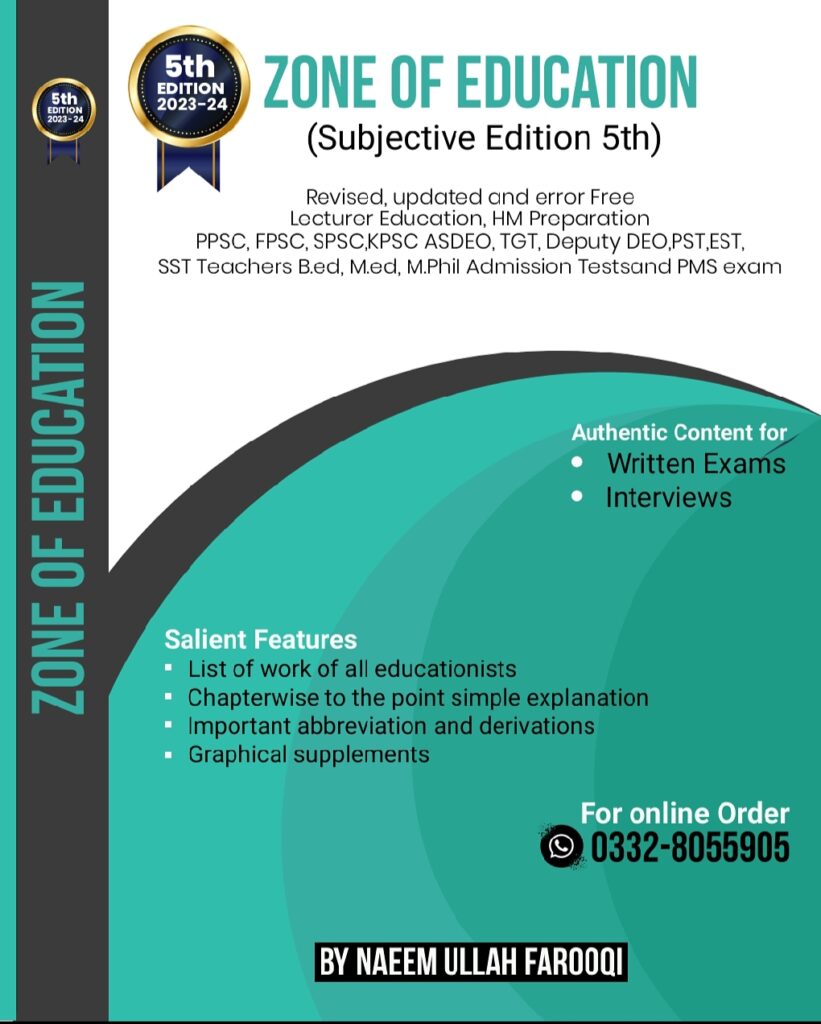History/Perspective 0f Education..
1. Policy and ______ in tandem in various sectors of education is an important cohesive process to ensure.
o a. Planning*
o b. Budget
o c. Finance
o d. None
2. Management in the education sector is limited to:
o a. Physical infrastructure*
o b. Financial flows
o c. Both*
o d. None
3. The process for review of the National ______ must be standardized.
o a. Curriculum
o b. Management
o c. Education
o d. Education policy
4. Which is the guide that delineates the learning path of a student?
o a. Teacher
o b. Trainer
o c. Books
o d. Curriculum*
5. A curriculum normally focuses on:
o a. Aims and objectives
o b. Content
o c. Methodology and evaluation
o d. All of these*
6. Pakistan does not have an ______ system that can continuously and adequately gauge the efficiency of the system and provide feedback for policy interventions.
o a. Education
o b. Assessment*
o c. Examination
o d. None
7. What are the aims of Pakistan’s system of education?
o a. Ethical or Spiritual aims
o b. Cognitive or Intellectual aims
o c. Economic or Professional aims
o d. Social or Cultural aims
o All of these
8. English was used from the beginning as a national language for official purposes.
o a. True*
o b. False
9. The local government has three tiers: ______, tehsil, and union.
o a. District*
o b. City
o c. Community
o d. None
10. Subject specialists have the capacity to write a good curriculum.
o a. True
o b. False
11. Rational knowledge includes:
o a. Quran, Arabic language, and literature
o b. Arithmetic, Hadith, Fiqah
o c. Alim ul Kalam
o d. Astronomy and Physics
o e. All of these*
12. Qutab ud Din Ahmad is commonly known as:
o a. Shah Waliullah*
o b. Ibne Khaldoon
o c. Imam Ghazali
o d. None
13. ______ wrote a book explaining the daily life problems in the light of Islam.
o a. Shah Waliullah*
o b. Ibne Khaldoon
o c. Imam Ghazali
o d. Sir Syed Ahmed Khan
14. The UGC has the responsibility for carrying out the periodical version of curricula. It is essential that this process must be:
o a. Continuous
o b. Frequent
o c. Participate with all stakeholders involved
o d. Followed by suitable teacher training
o e. All of these*
15. All academic education institutions are the responsibility of the:
o a. Federal Government
o b. Provincial Governments
o c. Both*
o d. None
16. The eight common disciplines are Urdu, English, Mathematics, Science, arts, social studies, and:
o a. Computer Science
o b. Biology
o c. Arabic
o d. Islamiyat*
17. Which thing is produced by the investment in education?
o a. National integrity
o b. High literacy rate
o c. Changes in attitude
o d. All of the above*
18. Why is investment in the field of education necessary?
o a. For quality education
o b. For high literacy rate
o c. For reducing dropout rate
o d. All of the above*
19. The standard of living is related to:
o a. Material conditions
o b. Social conditions
o c. Mental conditions
o d. All of the above*
20. Low standard of living:
o a. Increases social instability
o b. Dangers the national stability
o c. Causes social indiscipline
o d. All of the above*
21. Which measure can promote education in a country?
o a. Financial resources
o b. Opening of new schools
o c. Free education
o d. All of the above*
22. Low literacy rate badly influences:
o a. Social development
o b. Economic development
o c. Social, Economic, and Political development*
o d. None of the above
23. The important tool for the development of women’s education in Pakistan is:
o a. To establish more and more educational institutions*
o b. Equal curriculum
o c. Equal facilities
o d. None of these
24. The cause of illiterate people in Pakistan is:
o a. Growth in population
o b. High dropout rate
o c. Lack of funds
o d. Lack of schools
25. Four provincial curriculum centers were established to ensure provincial collaboration and evolve consensus in all activities falling within the purview of the Federation.
o a. True*
o b. False
26. ______ is the only province which has launched its own examination commission for grades V and VIII.
o a. Sindh
o b. NWFP
o c. Punjab*
o d. Multan
27. Curriculum formulation is not a lengthy process.
o a. True
o b. False*
28. The curriculum draft is finalized by the National Curriculum Review Committee, Lahore.
o a. True
o b. False*
29. The approved curriculum is sent to the textbook board for the production of:
o a. Curriculum
o b. Syllabi
o c. Syllabus
o d. Textbooks*
30. ______ curriculum committees prepare the curriculum plan.
o a. Federal
o b. National
o c. Provincial*
o d. All of these
JOIN ZONE OF EDUCATIONPK!
Discover the most comprehensive and reliable pedagogy resources in Pakistan, curated for competitive exam success. Our content covers all competitive exam MCQs, including PPSC, FPSC, AJKPSC, SPSC, and more. Designed to empower learners with top-notch material and insights, trust us for your preparation journey!


